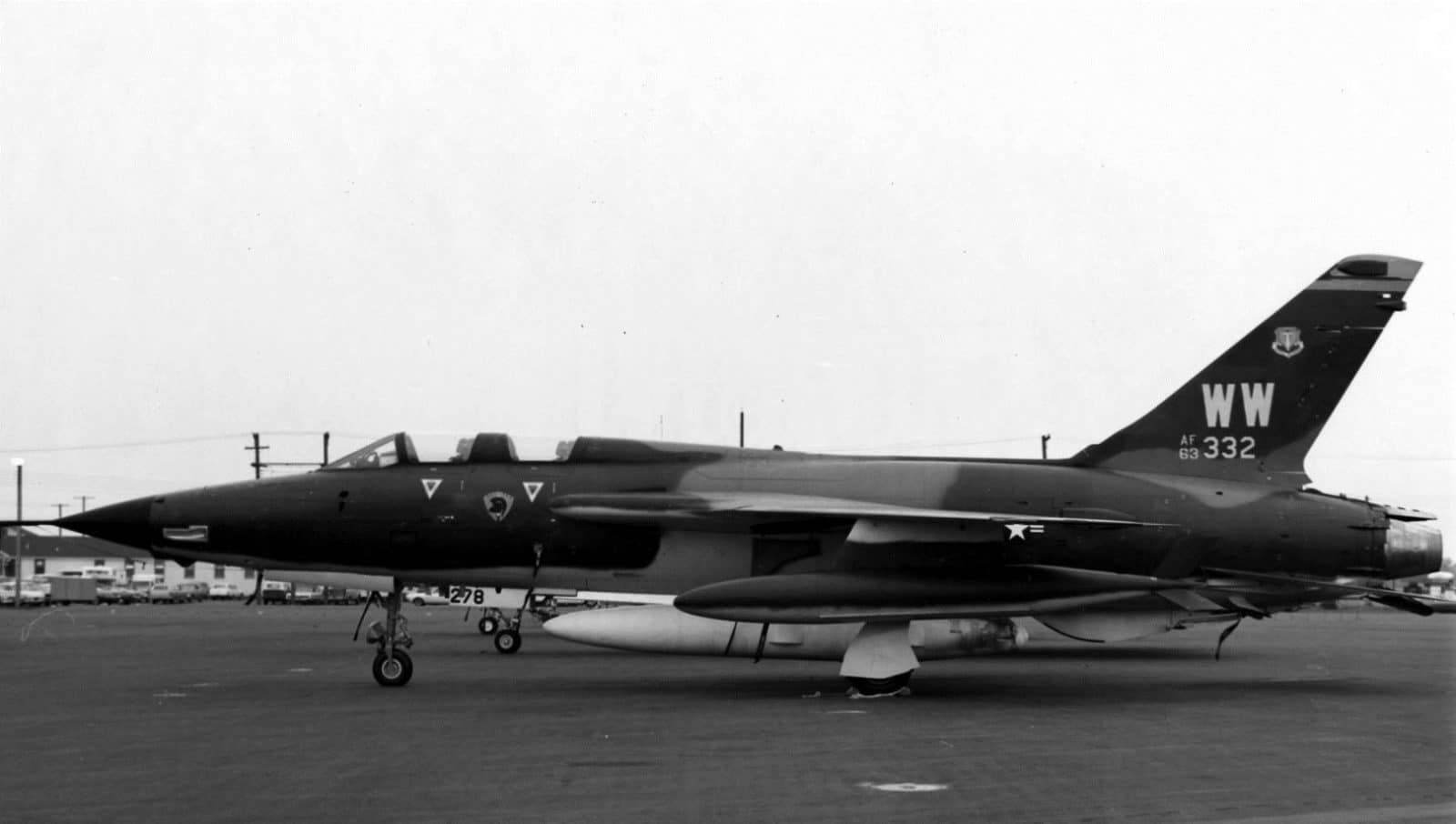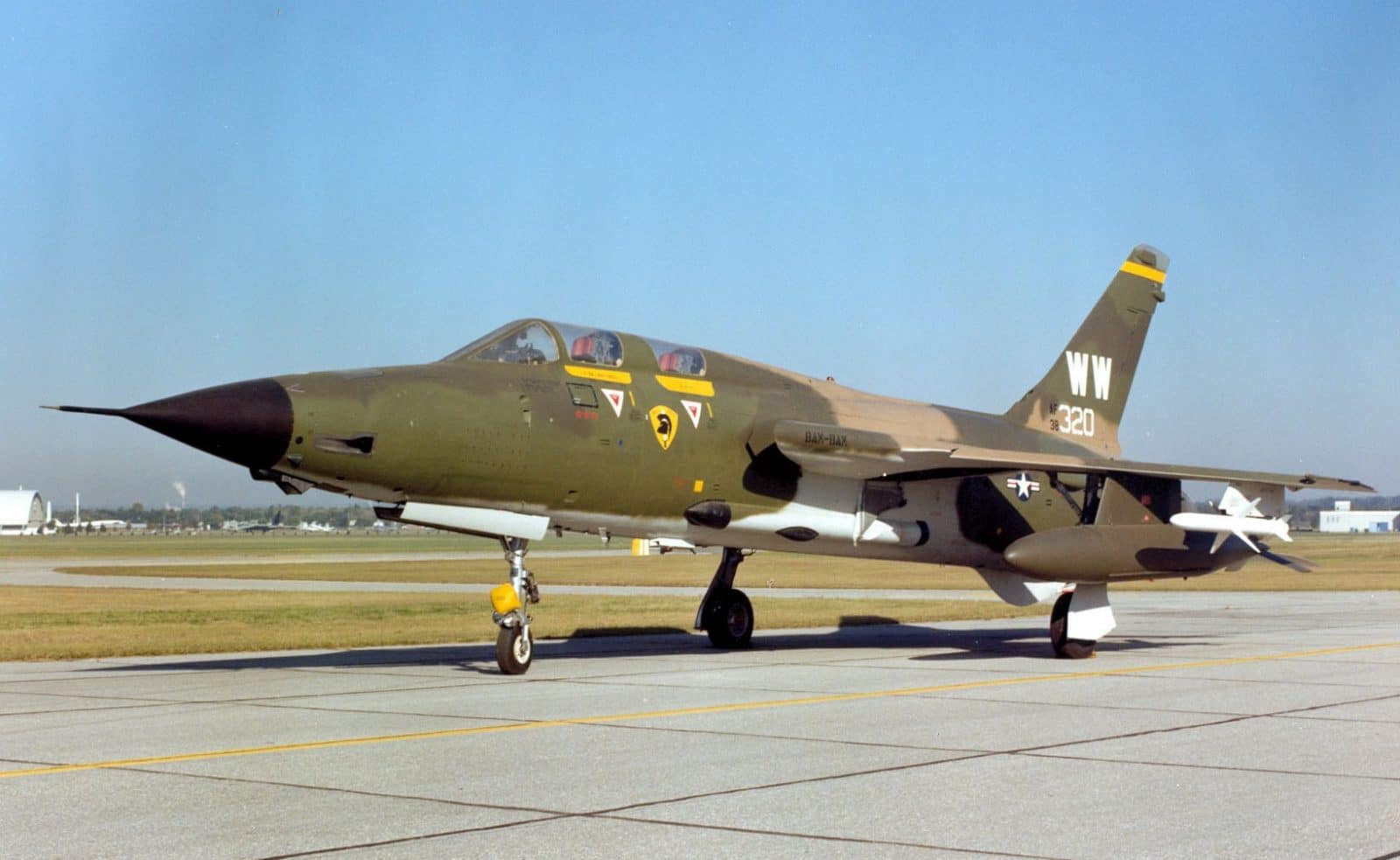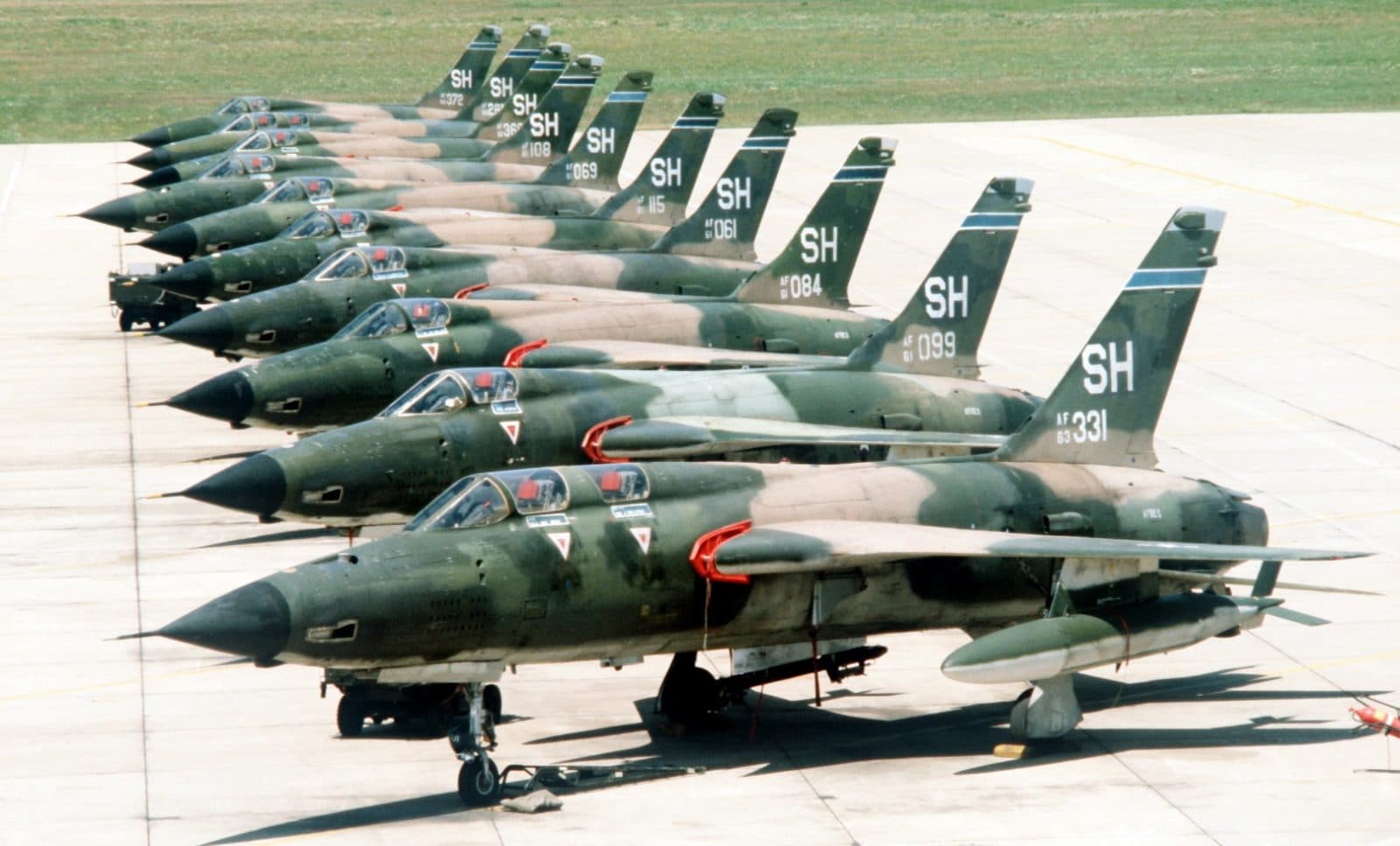At the Forefront of SEAD
The F-105F Wild Weasel III added the ability to fire the AGM-45 Shrike anti-radar missiles and to deliver conventional iron bombs to its sensors and jamming equipment. This gave the F-105F offensive capabilities that the F-100F did not possess. The first of these aircraft flew on 15 January 1966. They began arriving in Southeast Asia in May and flew their first sorties on 6 June 1966. Five of the new Wild Weasels were assigned to the 13th Tactical Fighter Squadron, based at Korat Royal Thai Air Force Base. Six more went to the 354th Tactical Fighter Squadron, based at Takhli Royal Thai Air Force Base. The name of their game was Suppression of Enemy Air Defenses- SEAD.

Jammin’
One program, code-named Combat Martin, fitted some F-105Fs with communication jamming systems installed in the rear seat area. These systems were intended to disable the ground controlled intercepts upon which the North Vietnamese pilots so heavily relied. Capable of delaying and garbling radio communications, the system was used one time before the National Security Agency (NSA) had the Air Force pull the systems from the Wild Weasels because they (the NSA) used them to listen to enemy radio communications (it was said with great effectiveness) themselves.

Lumps and Bumps for Delivering Thumps
The F-105G incorporated a considerable amount of new SEAD-specific avionics, including an upgraded Radar Homing and Warning (RHAW) system which required a redesign of the Thud’s wingtips to incorporate RHAW receiver antennae. So the outer wing hard points could be used for carrying additional weapons, including the AGM-78 Standard anti-radiation missile, the electronics associated with the Westinghouse AN/ALQ-105 electronic countermeasures system were moved to two long fairings or “bumps” mounted on the underside of the fuselage.

Replaced by a Legend
Because production of F-105s had ended in 1964, Thunderchiefs were replaced by other aircraft, primarily the McDonnell Douglas F-4 Phantom II. In October 1970, the 355th Tactical Fighter Wing, based at Takhli Royal Thai Air Force Base and the last operational F-105D unit in the Vietnam War, began their rotation back to the United States. F-105F and F-105G Wild Weasels continued their SEAD duties until the end of the war.

Fearful Losses
The F-105 was the primary attack aircraft during the first several years of the Vietnam War. Thuds flew more than 20,000 sorties in the skies over Vietnam and neighboring countries. 395 F-105s were lost (to all causes) out of the 833 Thunderchiefs produced (all models), including 62 operational (non-combat) losses.

Serving On With the Guard
The Thunderchief was rapidly withdrawn from USAF service after the end of the Vietnam War. Following the war the U.S. Air Force began transferring the remaining D, F, and G model aircraft to Air Force Reserve (AFRES) and Air National Guard (ANG) units. By the late 1970s, these well-worn antique Thunderchiefs were becoming even more difficult for the AFRES and ANG units to maintain. The F-4 Phantom II eventually replaced the F-105 in every mission, including in the Wild Weasel role with the dedicated F-4G Wild Weasel V variant. The 128th Tactical Fighter Squadron of the Georgia Air National Guard retired the last operational F-105G Wild Weasels on 25 May 1983.
[youtube id=”MR2F677wYm0″ width=”800″ height=”454″ position=”left”]
